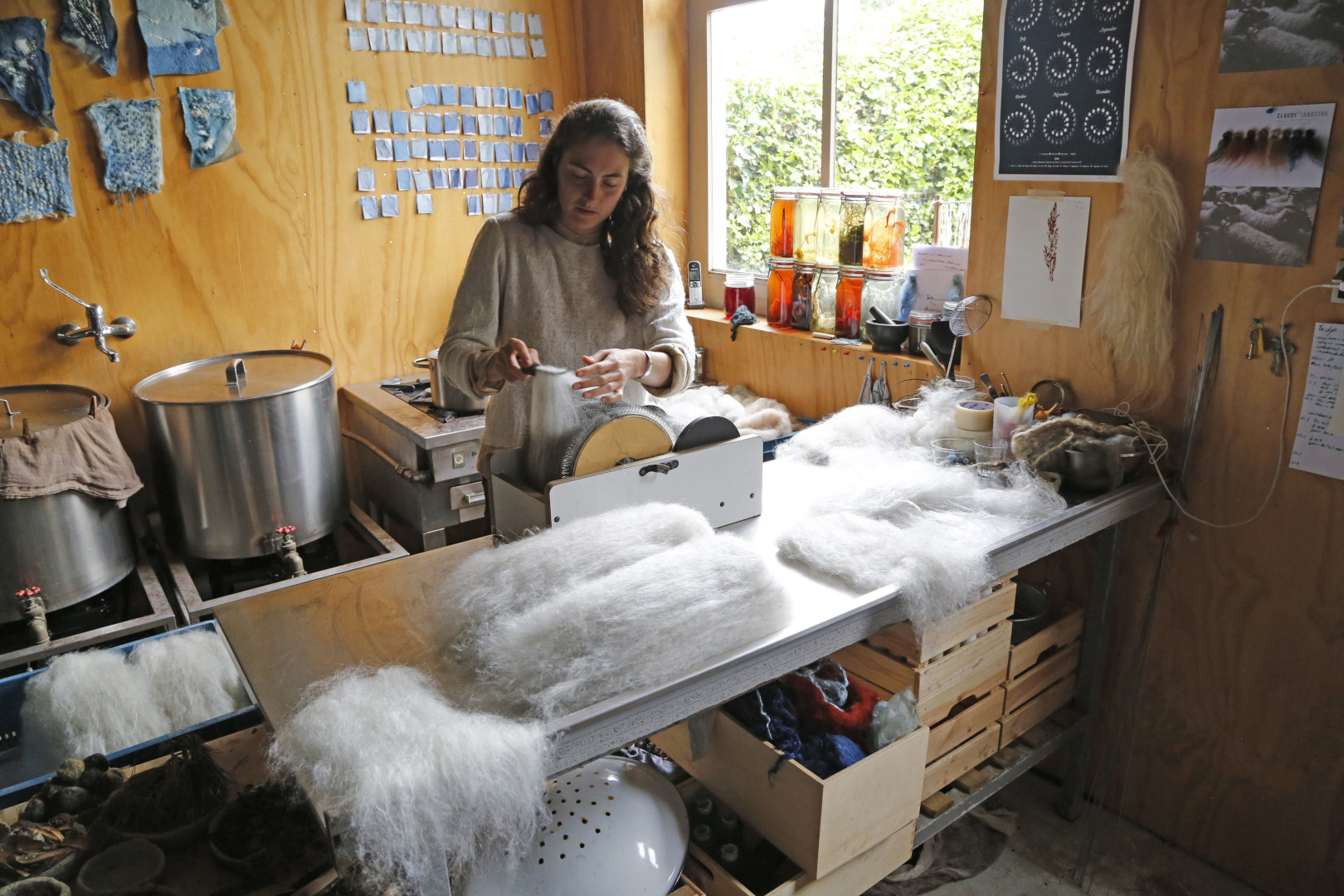Claudy Jongstra: murals, community and environmental awareness

Artworks by Claudy Jongstra have featured in the likes of the Fries Museum in Leeuwarden and the San Francisco Museum of Modern Art. Fields of Transformation, a triptych more than 16 metres wide, is displayed within the University of Pennsylvania’s Moelis Grand Reading Room. Her works are characterised by the utilisation of natural colours and textured fibres from rare Drenthe Heath sheep.
You will find a flock of around 250 of Europe’s oldest breed of sheep in Friesland. If the flock expanded, the local heathland would grow. Should their number decline, then the forest would begin to cover a greater area. The sheep have a significant impact on the landscape in which they live, so maintaining a balance is important. Examine Jongstra’s working practices and you will quickly learn that she exhibits an environmental awareness and commitment to the community.
It is within Friesland that Jongstra has interests in a farm, De Kreake. The rural property plays a key role in the activities and philosophy of Farm of the World, a cultural foundation that places an emphasis on sustainability: it was initiated by Jongstra, Gitta Luiten and Claudia Busson.
De Kreake stands at Húns, a few kilometres west of Leeuwarden and due south of Dronrijp — the village in which renowned artist Lawrence Alma-Tadema was born. Plants such as dyer’s camomile and true indigo count among those grown organically on the farm. They — and natural pigments that would be recognisable to Golden Age artists and Alma-Tadema — are used to produce the dyes used by Jongstra and her creative associates.

Visit the farm and you will see several young people at work. Some of them have struggled to find a path in life elsewhere. To coincide with Leeuwarden-Friesland being a 2018 European Capital of Culture, De Kreake is hosting several events, including yoga sessions and the ‘Food for Thought’ lecture series.
At Spannum, a few kilometres south-west of Húns, you can find the Farm of the World studio. Students from around the globe compete for prestigious apprenticeships. The property has a compact garden and a medicinal-smelling workshop in which plants are dried and treated to create dyes. Wool is carded and brushed to straighten wool fibres that will be utilised in artworks. Coloured wool is strewn on tables in the workshop across the yard where works are painstakingly created. Hues and textures are central to Jongstra’s artworks.
Woven Skin was billed as ‘the first of Jongstra’s murals to come off the wall’. The work was exhibited during May in the cavernous post-industrial setting of Waste No Waste Factory, a former sugar production unit in Groningen. Reminiscent of animal pelts hanging on metal racks and stretching for 48 metres, Woven Skin, was accompanied by a discordant soundtrack.
The work — in common with De Kreake — invites people to consider and enter debate about agricultural production methods.
See www.farmoftheworld.nl for more details about Farm of the World and www.claudyjongstra.com for more about Claudy Jongstra’s oeuvre.
TEXT AND PHOTOS: STUART FORSTER

Subscribe to Our Newsletter
Receive our monthly newsletter by email




